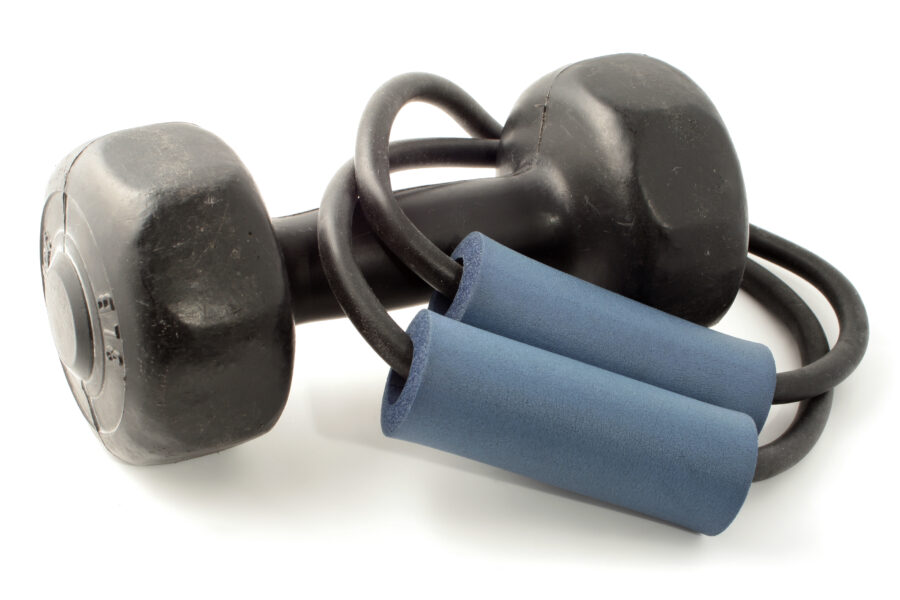Long hours in the seat and limited opportunities for physical activity can take a toll on a truck driver’s health. But being healthy on the move isn’t impossible. Weaving in exercise into a truck driver’s schedule can make a huge difference in their physical fitness, mental well-being, and overall quality of life. We’re going to get into exercises and habits that are good for truckers, so you can stay healthy while driving down the highway. From stretching to cardio to strength training we’ve got you covered with practical and effective workouts that will leave you feeling strong, energized, and ready to hit the open road.
Truck driver health issues
In addition to the strain of sitting all day, truckers face common health problems like obesity, heart disease, diabetes, and musculoskeletal problems. This is due to long periods of sitting, irregular sleep patterns, poor diet, and high stress levels. However, acknowledging these issues and taking proactive steps can help you stay healthy on the road.

How to be healthy on the road
Stay Hydrated
Hydration is key to your well-being and performance on the road. Make sure you always have a good supply of water in your truck cab. Invest in a good cooler or insulated water bottle to keep your water at the right temperature for long hauls.
Take regular water breaks and use these short intervals to stretch your legs and hydrate. You’ll have more energy, and be more mentally alert and focused. Dehydration can cause fatigue, dizziness, and cognitive impairment all of which are hazardous when operating heavy machinery. By staying hydrated you’ll be better for yourself, better for your performance, and a safer and more enjoyable journey.

Manage stress
Managing stress is key for drivers. The job is demanding and the frustrations of sharing the road can cause high stress levels so stress management is vital for good health. Techniques like deep breathing and meditation can calm the mind and reduce anxiety. But these may not work for everyone. So seeking social support from friends and family is also important for stress management.
Social support and camaraderie from friends, family, professional communities, and other social outlets can make a big difference to your personal health, focus, decision-making, and overall job satisfaction. Managing your stress will contribute to a healthier and more fulfilling career.

Eat well
As a trucker eating well can be tough with long hours on the road and limited healthy food options. But with some planning and informed choices you can eat well and fuel your body. Here’s how to eat well on the road:
Plan and pack your meals: Use your 10-hour break to plan your meals for the journey. Choose whole, nutrient-dense foods that will give you lasting energy like fruits, vegetables, lean proteins, whole grains, and healthy fats. Pack healthy snacks like whole grain crackers, hard-boiled eggs, nuts, seeds, granola bars, and fresh fruit for on-the-go munching.
Make smart choices at truck stops and rest areas: When stopping at truck stops or rest areas make smart choices from the options available. Look for healthier options on the menu like grilled or baked proteins, salads, and vegetable sides. Choose water or unsweetened beverages over sugary drinks. If you need a quick snack go for fresh fruit, yogurt, or a small portion of nuts. As much as possible avoid fried and processed foods which are high in unhealthy fats and sodium. You don’t have to always avoid fried options but making healthier choices more often will be better for your overall health.
Get Enough Sleep
Effective route planning and scheduling can help you get more sleep. Before you start a trip plan your routes and estimate your driving time so you have enough time to rest. Be realistic about your capabilities and don’t push yourself too hard. Take regular breaks every few hours to stretch, move around, and counter fatigue. If you have sleep apnea bring your medical equipment to help you sleep deeply.
Remember quality sleep is key to your safety and the safety of others on the road. Prioritize rest and use these tips to get a sleep routine for truck driver health.
Wash your hands
Hand hygiene is key for drivers to stay healthy and prevent the spread of germs. Here are some tips to keep your hands clean on the road. Always carry a supply of hand sanitizer with at least 60% alcohol content and use it frequently especially before and after eating, using the bathroom, or touching common surfaces. Also, wash your hands with soap and water when possible before meals and after using the bathroom. Keep a small bottle of liquid soap in your truck and use the clean facilities at rest stops or fuel stations.
When that’s not possible wet wipes can be a good alternative to protect your immune system. These can disinfect and remove dirt and grime you’ll encounter on the road. Having a supply of wet wipes, soap, and hand sanitizer with you can be key to staying healthy on the road.
Exercise Regularly
Acknowledging the sedentary lifestyle is the first step to mitigating its effects. Long hours of sitting and confined spaces can be detrimental to your health so exercising regularly is crucial. You can enhance your physical well-being and neutralize the negative effects of a desk job with a regular exercise routine of simple exercises. Use rest stops or trucking terminals to your advantage; use these moments as opportunities to get physical. A short walk, a quick jog, or a series of stretches – no matter how small can make a big difference to keep you energized and fit.
Truck driver indoor exercise program
Push-ups
Push-ups are a simple and effective exercise to strengthen your upper body, core, and cardiovascular system. A few minutes a day will engage multiple muscle groups and increase strength and endurance. As an exercise that requires no space and no equipment push-ups are perfect for on the road. Start with a number of reps you’re comfortable with and increase the routine as you go. With consistency, they can be a valuable tool to stay healthy on the move.
Shrug holds
Shrug holds can be a good addition to your exercise routine to maintain upper body strength and posture. The exercise is to lift your shoulders up to your ears and hold for a few seconds before releasing. Shrug holds target the muscles in your upper back and shoulders and will relieve tension and improve posture. As you can do them seated shrug holds are a great way to engage your muscles and counteract the effects of long hours on the road.

Pilates exercises
Pilates exercises require no more than body weight and can be found for free online so they are a great addition to your exercise routine. These exercises engage the deep abdominal muscles and will help alleviate lower back pain caused by prolonged sitting. Pilates also emphasizes proper alignment and body awareness which is good for driving posture. These exercises can be modified to suit any fitness level and can be done in confined spaces making them perfect for the truck driver’s lifestyle.
Lateral leg stretch
The lateral leg stretch is a great exercise for truck drivers to add to their fitness routine. It targets the muscles of the inner and outer thighs and will improve flexibility and stability in the hip area. To do a lateral leg stretch sit comfortably in the truck seat and extend one leg straight out to the side. Gently reach towards the extended leg with the opposite hand and stretch along the side of the leg. This exercise is good against the effects of prolonged sitting and will improve circulation and reduce muscle imbalances.

Breathing exercises
Breathing exercises are great for truck drivers to relax, reduce stress, and increase focus and concentration. Deep diaphragmatic breathing is one of them. Sit comfortably in your truck and place your hands on your abdomen. Breathe in through your nose and allow your belly to rise as your lungs fill with air. Breathe out through your mouth and allow your belly to gently fall. This type of breathing engages the diaphragm and will trigger a relaxation response in the body. Practice deep diaphragmatic breathing regularly, especially during breaks or stressful moments and it will reduce tension, calm your mind, and overall truck driver health.

Portable exercise equipment for truck drivers
Weights
Weights are great for building muscle on the road. Good for a truck driver looking to lose weight or gain muscle, weights will allow you to target specific muscle groups – like the trapezius muscles – for overall health. If you decide to add weights to your fitness routine remember to start slow to avoid injuries.
Resistance Stretch Bands
Resistance stretch bands are versatile, convenient exercise tools that offer resistance through different movements. These bands allow truck drivers to engage multiple muscle groups without the need for bulky equipment. Lightweight and portable resistance bands will build muscle strength, endurance, and flexibility. Adding these bands to your routine will promote overall fitness, counteract muscle imbalances, and be a great way to stay active on the road.

Portable Pull-Up Bar
Portable pull-up bars are a great fitness solution for truck drivers, they allow for various upper-body exercises. They will strengthen several muscle groups and upper body strength and stability. These lightweight and compact bars can be attached to trucks or any other sturdy structure. Their versatility and ease of setup allow truck drivers to do challenging workouts anywhere and build strength, posture, and overall well-being.
Jump rope
A jump rope is a great portable cardio workout for truck drivers. By keeping a jump rope with you, you can do high-intensity exercise that will boost cardio fitness, coordination, and agility. Good for small spaces, a jump rope is a quick and efficient way to get your heart rate up and burn calories during breaks. Adding this to your routine will increase energy, and improve heart health and overall fitness.

Other Exercises
Jumping Jacks
Jumping jacks are a simple exercise that truck drivers can add to their fitness routine. Do jumping jacks during breaks or downtime to increase energy, stimulate blood flow, and build leg muscles and overall endurance. This exercise can be modified for different fitness levels and is low-impact if needed.
Core Exercises
Core exercises like planks are a must for truck drivers. They will strengthen the core muscles, and improve posture and stability. By holding a push-up position with your forearms on the ground, planks will work the core, back muscles, and glutes. Adding core exercises to your routine will strengthen your core, reduce back pain, and overall truck driver health.

Be Realistic — Take Small Steps For Success
Starting a new exercise routine including the ones above requires a slow and gradual approach to allow your body to adapt and avoid injury. Whether you’re doing push-ups, shrug holds, Pilates, or any other exercise start with a comfortable number of reps or duration. Pay attention to any signs of fatigue or discomfort and listen to your body. As you get stronger and more endurance you can increase the intensity, duration, or reps. Consistency is key and taking small steps is the path to long-term success.
Disclaimer:
This blog post is for informational purposes only. ShipEX makes no warranties about this information’s completeness, reliability, or accuracy. Any action you take upon the information on this website is strictly at your own risk. ShipEX will not be liable for any losses and damages in connection therewith. Furthermore, nothing in this blog alters ShipEX Policies which are subject to change without notice.


